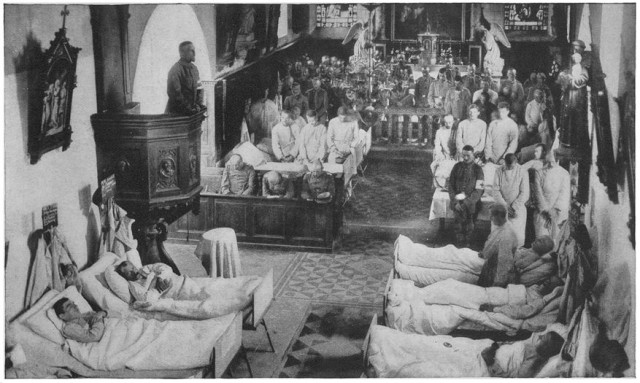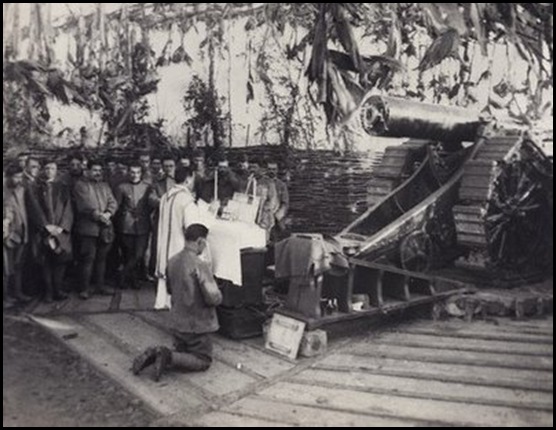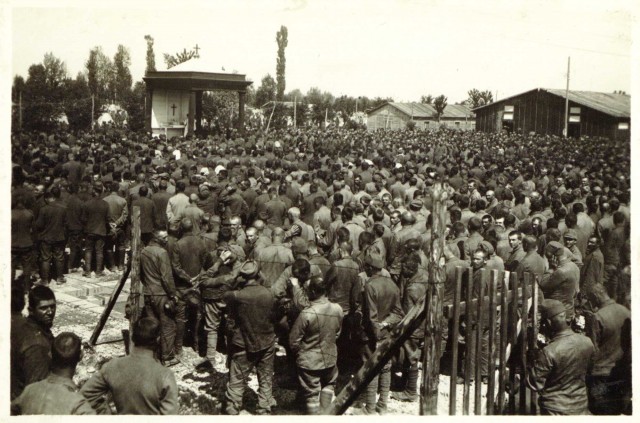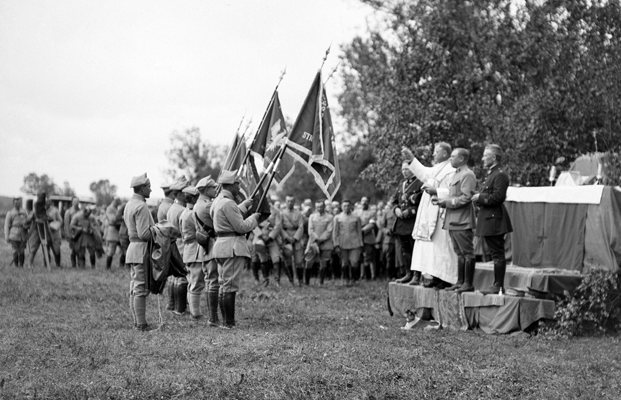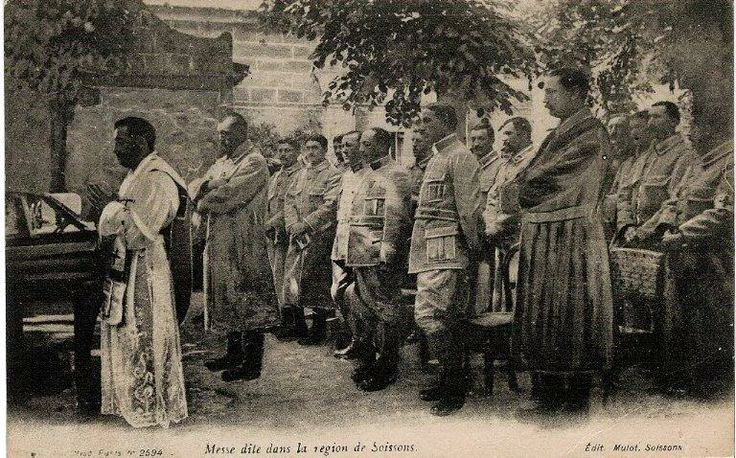Excerpt 1: What is orthodoxy?
Excerpt 2: Liturgy and Emotion; The Titanic Principle
Excerpt 3: Cult at the Center of Classical Culture
Excerpt 4: Plato and Kant Compared
VI.
Sketches Toward a Phenomenology of Cult
1.
We have spoken about the seven sacraments, attempting to comprehend their “whatness.” Now we have come to the point when we ned to clarity the modality of their operation, their “how.” Let us once again ask ourselves: “What does a sacrament do?” Because through the “what” of the operation is also defined “how” it works.
A sacrament selects, distinguishes an event from its surroundings, from the sum of similar events, isolates it, separates it from the ordinary. Existence flows, however, as one act, in a compact succession, and extends itself as a web of events out of which nothing emerges as peculiar.
To separate a fibre of this web it is necessary to extricate it from the whole, cut back the ordinary links between events, their usual correspondences. Thus it is distinguished. In metaphysical terms the sacrament is above the world, but in phenomenological terms it is a distinction from the world. We would have no need to add further, if there were not points of contact between a similar response and other spheres. Once distinguished, the event is also an aesthetic phenomenon. Distinct and aesthetic are synonyms. Then how do these two things differ, the religious and the aesthetic? We will respond for now with a non-phenomenological answer.
The aesthetic effects a distinction through the very act of distinguishing, and its meaning is precisely the actualization of this distinction, in the enjoyment that derives from it. Thus the aesthetic is illusion: as distinct, the event is not different in substance from the environment from which it is distinct, there is no difference in its being and therefore it remains the same as the environment, but with a distinct form conferred upon it. … the aesthetic phenomenon appears distinct, but is not so in reality; it bears the pretense of peculiarity, without having it in fact. In a word, the act that makes the distinction is everything, whereas that which is distinguished is nothing.
The sacrament effects distinction in a completely different sense, in fact in an opposite way. [In] the religious phenomenon, the act of distinction is only the first moment. In the religious phenomenon, the aesthetic is only the beginning, the thing presupposed. …. Thus the religious dimension produces in man exactly the opposite effect of the aesthetic dimension. Insofar as they are isolated from the rest and among themselves, true and proper microcosms (incorniciati) and thus standing alone, aesthetic phenomena atomize the attention, loosen internal coordination and conferring absoluteness to single acts, thus destroying the integrity of the interior life.
Religious phenomenon, on the other hand, form a complete whole, confirm and unite the integrity of the life of the soul and in this way strengthen the will, where the aesthetic phenomena weaken it. Religious phenomena mold being into a coordinated whole, in self-recollection of the person, whereas aesthetic phenomenon destroy all this. The elements of existence distinguished by cult become so by entering into a new connection and becoming centers of unification. The web of temporal life is torn and the same threads used to weave a new life, a spiritual life. The masks are reduced to dust and from this dust true countenances are molded: from the natural toward the supernatural. Thus it fixes every series of the events of existence upon its own incarnate idea, upon its own absolute root [….]
[On the “metaphysical correlation” between sacraments and rites. ]
The common opinion about the status of rites is comparable to the response of one who, asked about the structure of the human organism, were to say that a man has a head and a torse and that the difference between them is that the head is more important than the head, but said nothing about the fact that the two organs are connected to each other. It is evident that if in the life of the Church both rites and sacraments, these must be internally related to themselves, and not only through the value that we give them; therefore to understand rites it is necessary to begin precisely from their subordination to the sacraments. In a certain sense it is right to affirm that the common double-term “sacraments and rites” is an example of the figure ἑνδιαδθοῖν indicating cult in its concrete integrity….there is no sacrament without rite, nor rite without sacrament. And it is possible to speak of one or the other only by abstraction, and when doing it we must never forget that we are abstracting.
[…]
The rite is an order, convention, condition, and if you will, a norm. Of what? Of a sacrament, obviously. Rites are the conditions or modalities by which sacraments are effected. They are the “how” of the sacraments, while the sacraments are the “what” of the rites.
[…]
The rite is an internal order, internal to something. To what? Internal to the sacrament. The rites create an internal order for the sacraments. The latter are the heart of the life of the Church, but in themselves they could not be distinguished from the rest, and so it is necessary to create an order internal to them, i.e. to give them layers, wrappings—rites—that prepare our consciousness for them. The rites are the order of the liturgical actions, whose meaning and goal is not in themselves, but in the sacraments that they serve and to which they give clothing and order. They are necessary conditions—but not in themselves—for the perception of the sacraments: they are the fingers that point to the sacraments. The series of such fingers, their succession—which in and of themselves do not constitute cult, but without which it would be impossible for us to draw near to the sacraments and comprehend them—cannot prescind from the sacrament indicated by them.
[…]
The sacrament is given to consciousness by its rite, but the rite is important precisely in that it exists for prepare consciousness for the perception of the sacrament, and not in and of itself. Thus in the life of the Church, rite and sacrament are not divisible: without the rite the sacrament would not reach our consciousness, without sacrament rite would not find its confirmation in the dimension of the absolute, would be a motion without wings toward heaven, and a vain illusion of firm ground in the midst of the aether.
4.
Without rite there would be no consciousness of sacrament, that is our claim. […] The norm thus stands in the fact that, because it is invisible in itself, in its intelligible essence, the sacrament must be indicated by its rite, that brings it near to our conscoiusness and leaves us before the act of faith or the sin of unbelief, left only to ourselves: in the sacrament as such, in fact, it is possible only to believe or not believe, and not to demonstrate or refute it….the sacrament is only registered as an object of faith, but it is possible that faith may not exist. Thus, our response to the question about what, in substance, in the rite leads us to the sacrament, is to search in the structure of the rite. In other words, we have arrived at the phenomenology of cult, at the “how” of its action, a “how” in which we must come to an understanding of the metaphysical questions posed above.
[…]
The sacrament unites above and below, the earth and heaven, the transcendent and the immanent. To do so, it must have in itself an earthly moment, and as only this is seen with the senses, with the senses it is impossible to distinguish the sacrament from other events and things in the world. The μυσήρια, the sacramental realities, bear with them no exterior sign and thus, although they are metaphysically defined, they remain still empirically indistinct. Cult is, however, an event both metaphysical and empirical, and so its empirical composition should comprehend something that is not only metaphysical and that also, in its very comprehension, separates it from the world, placing it “above the tumult of the world.” In other words, the sacrament must not only be transcendent, but also manifest itself as such: the sacrament in its manifestations—the rites—must reveal itself precisely as something existing per se. Further, as such it must necessarily and inevitably reveal itself to the consciousness of society (because consciousness of the sacrament is the condition of the very existence of society).
6.
The time has come to clarify what precisely I intend by the onion-like structure—or stratification—of the rite. We have to know whether the question refers to its spatial structure or temporal, or to concentricity, stratification, inclusivity and juxtaposition, or whether we mean rhythm, pulsation, consecutivity. From the outside, approach cult in a positive way, we would certainly resopnd that it is neither the one nor the other. The temple, the spatial component of cult, is the reiteration of the principle of isolation, in a repetition that elevates the aesthetic phenomenon to its maximum potency. The carpet laid out for the celebrant at the moment of the Gospel reading, during the polieleo, during the moleben, the panichide and other liturgical actions, the carpet placed before the holy altar, the episcopal eagles, the episcopal chair and so on, are not signs of veneration or objects of leisure, but isolators, instruments of separation from the rest of reality and therefore they have nothing to do with the rugs put out by over-zealous sacrestans in honor of an ecclesiarch, or for important members of the faithful or sometimes for sick parishioners.
The priest, as hierurgos, must be elevated—isolated—from the dimension of the people. The rug that he has underneath his fit isolates him from the ground; the liturgical vesture wrapping his body—called riza just like the vesture of the icon—isolates him from those standing about him, in various grades of isolation. Sometimes iconostases and curtains are added to all this. In this manner, to the subtracted world, the priest becomes “transcendent to the people,” is “in the world but not of the world,” in a transcendence that has multiple stages and possible grades. Elevated in this manner, seem from below the priest is not perceived as such, but as a sign of the height of his elevation, as an emblem of the higher, transfigured dimension. The isolation we perceive on the empirical surface must be interpreted mystically as an elevation, as a forward thrust, as a jump made into other coordinates of reality: it is ascension.
In the same way, the one who receives the sacrament, the pilgrim who gathers the sacred energy, is momentarily called forth: the so-called “cushion,” the sheet of satin layed out at the moment of the coronation in the marriage ceremony, or the approach to the ambo and the carpet at the moment of communion, approaching the carpet at the moment of confession and so forth, are rites of mystical separation of the pilgrim from everything else. To roll out the carpet for distinguished persons is not only an expression of privilege, or injustice—not in itself a disaster—but it is also and above all a perversion of the Christian rite. […]
The isolations of the hierurgos are his ascents into heaven, a sort of spiritual liberation. But each must limit himself to the measure that is given to him, ascending only to the dimension that is proper to him. IF someone tried to go beyond the sphere chosen for him, he would enter an atmosphere so rarified, into an element that the fire had so refined, that he would be suffocated and hurtled with broken wings into the recesses of the earth and the depths of the sea. A new little Icarus, he will tumble into the abyss of chaos and spiritual formlessness. God does not want that to happen to distinguished parishioners!
7.
[…]
Through the distance created by its isolation the sacrament draws near to us, and drawing near to it we notice the ever greater pathos of this distance, that fear of God that every more vividly attests our “below” status as we soar ever higher, and every more irrevocably elevates our creatureliness the more divine our place becomes. The succession of entrances and elevations permits us to some way to become acclimatized, to not be harmed by the “terrible” mysteries. In this way, we find ourselves ready to undertake the sacral act and the liturgical act, without being broken, thanks to the gradualness of the ascent, of the terror. If we were directly transported to such heights, it would be in all probability impossible to resist. In church the elevated potential of grace is little noticed in virtue of its gradual growth. It would be enough to abstain for several weeks form the divine liturgy and then enter suddenly into church when it is being performed on the altar, right at the moment of the rite, in order for the spiritual atmosphere of the church to appear incandescent.
But the onion-structure of cult, its stratification, is much wider that what we have pointed out so far. A first isolation is that of the Christian State which the borders separate from another State. There follows the isolation created by centers of habitation, cities, countrysides, villages, parishes: they are all realities that isolate themselves from spheres that are relatively indifferent to religion […]. In the church, the temple itself, the naos, is isolated from the narthex, there follow the ambo and the solea, ….Then the iconostasis and the sanctuary, the place of the hierurgy of the sanctuary. Then the altar and so on. So much for space. The same is true also for time.
In the course of history, the sacred epoch is fundamental, as with it the calculation of time begins. And as space is partitioned by a series of barriers that dispose each part in layers with respect to the others, time is divided into a series of chronological formations that rhythmically isolate one part of sacred time from another which is even more sacred. To distinguish the more sacred from the less sacred times, sacred from earthly, earthly from sinful, there is adopted a series of prescriptive measures. In effect, seen in the course of time the whole liturgical Office is a system of such temporal stratifications.
8.
Just as with space, time is articulated in a series of grades that in succession approach to the most sacred center, to the holy Body and the Holy Blood, and in the beginning there is a tower, a tower with levels like that of Babylon or…..just so also the liturgical office that is carried out in the temple leads up to communion with the sacred Body and Blood through the chronological succession of elevations, through the series of incremental ascents. Take for example the sound of bells: in the liturgy, the sound of bells and sound in general are considered integral parts of the divine office, actions not merely utilitarian and earthly, but liturgical; to which one must make the sign of the cross and in the past, salute with the words: “With the voice of the Archangel we cry to thee, O Virgin pure: ‘Rejoice, o full of grace, the Lord is with You!’” The sound of the bell—which normally lasts for an hour, as it still does in the smallest districts—then the Trisaghion, the Cherubic Hymn and the Pater Nostser are all isolatory events that stratify the liturgical office into ever more transcendent times.
At the sound of the bell, the evangelion, i.e. at the good news of the coming of a holy and celestial time, all states of existence, the quotidian and earthly thoughts, all aspirations and sentiments are interrupted in their course. Our interior life takes another direction, enters another course. It is still of this world, but now manages to escape from the dimension of this life. We enter the temple with devout thoughts and sentiments, with our will turned toward heaven. And our devoted disposition finds satisfaction in reaping a a spiritual content. We hear the words of the saints about the sacred Word; we see images and symbols of sacred events revealed by the saints. This, then, is the first of the concentric circles. The Trisaghion lifts us up to heaven, and the words of the angelic chant to the Holy, Mighty, and Eternal one—holy words of apt force—are no longer earthly words, but heavenly. The sanctity of God is also his transcendence over the world, his not being of this world, his being above the world. Because he is holy, transcendent, other-worldly and not of this world, God is for this reason Mighty, Immortal. And he is Mighty and Immortal because Holy, because other-worldly and above the world.
The same words are sung for the faithful departed, because they are no more of this world, because they are now in another dimension. But to hear the sacred words, which are not of this world, we too must die to the world. For us too—as for one who has died and ever dies in Christ—must be sung the “Holy God”…And once we have died, heavenly things are related to us: the sacramental words, themselves events, the acts and the letters of the apostles and the Gospel. This is no longer human speech, but divine, of God, a new life, a new level of existence. We are dealing, simply, with holy speech about eternal speech, which comes from Eternity, about speech of the Word himself (the apostolic writings). But there follow the words of the Word (the Gospel) which vivify and inspire. They elevate us, then, to a new level of transcendence above the world. The Cherubic Hymn takes us toward all the heavenly spheres even up to the throne of God, to the cherubim themselves, sacramental lives and sources of life above whom the Lord is seated, King of Life. And drawn along by an invisible current, by a stream, by a subtle breeze, by a slight chill that shoots from the feet to the head, by an extremely subtle storm, by a current that flows in spirals from here below to the world above, we lift off from earth and take flight: we are no longer on earth, but suspended in the air. We are with the cherubim, we who are a symbol of them in the sacrament, we assume their aspect, in them we are transfigured.
Then in the space above the heavens there follow in succession the events of the life of God, the tremendous Sacrifice is accomplished, the blood of God is poured out, his Body broken and the Spirit, peaceful Joy, Oil of comfort and Softener of our hardness, arises and gives form to our being, shapes our body “with light fingers, like sleep,” with their delicate touches. On the clouds of the heavens we turn ourselves toward the heavens and meet the Heavenly Spouse, among the clouds we meet our Lord, raptured, finally before the Tremendous and Life-Giving Body and Blood of the Lord. Then the Lord who is higher than the Heavens, unreachable on the earth, makes the visible out of the invisible, reveals himself with the Father. The veil of heaven is ripped aside and we glimpse Eternity: the Our Father is the final passage, the word of the Word that we dare to pronounce as if it were our own, as if it came from us, with mortal lips calling the Father father. And then, at the last level of transcendence, we communicate with the most holy Body and Blood of our Savior Jesus Christ, with the Word itself, with He who is One and Consubstantial with the Father, who is the Source of Intellect and Life.
9.
Just as in space, this system of isolations recalls a system of locks that raises gradually, and without too much force, the level of the water. If the difference between the two sides was not held back by the series of locks but swelled suddenly, no barrier could contain the pressure of the water. The same thing happens in the sacrament. The soul cannot sustain too great a leap toward the sacramental medium without the aid of a gradual passage, represented by the system of locks of mystical isolation.
But in the smallest instance it functions as in the greater, and in the greatest it functions again as in the greater. The liturgical office is rhythmically divided into a series of levels, but the office itself is itself, in its totality, a level. In the initial invocation of any liturgical service, in particular of the divine liturgy, the priest rips the web of time and in this rip sacred time is placed nakedly, the image of Eternity, the nouminous foundation of time. “Give the blessing, Master” or “Give the blessing, Father” is the invitation to thrust time aside, an invitation to the earth who awaits heaven. “Give the blessing, Master” is the beginning of the liturgical service and means “tear time apart,” tear the continuity of the cloth of time.” And He does so: time is pulled aside, the temporal nexus comes apart and the Kingdom of the Most Holy Trinity begins as a historical event in time, although it is an eon that contains all time in itself. The time of God begins.
10.
In a strict sense this time is also prazdnik, “feast,” because prazdnik means not occupied, free of duties, at liberty, open, available: the feast is, thus, tiem not occupied by the everyday, a time dead to the everyday, a particular time, made free of what is of this world, transcendent, holy. And it begins with the nedelja, not in the modern Russian sense of “week,” but in the old Slavonic meaning of “Sunday,” or the time of not-doing: “Six days you will labor, but the seventh day, the Sabbath, is in honor of the Lord your God.” And the liturgical service is a pause of great silence, just as the highest point of the liturgical service is the not seeing, the not hearing, the silence, as in the great entrance of the lituryg of the Presanctified, as the Holy o fholies, empty and dark. In utilitarian terms, the temple is a non-thing, the feast is a not-doing. In this not-doing and this not-thing, however, the things of the whole week and the whole universe are contained.
11.
Interrupting the monotonous course of time, the feasts give the sense of duration and contribute toward perceiving and measure time with an interior significance. For us time exists because the feasts exist. Time is organized by the calendar, by the rhythm of the feasts.
[…]


















